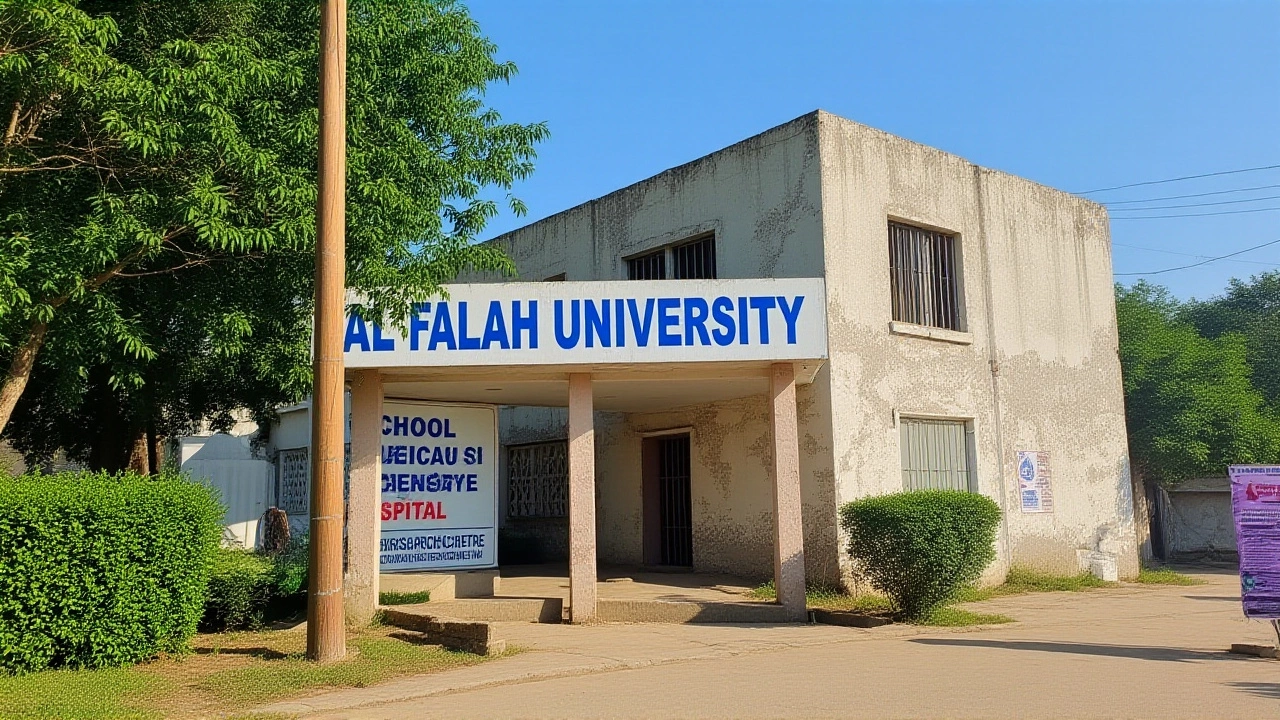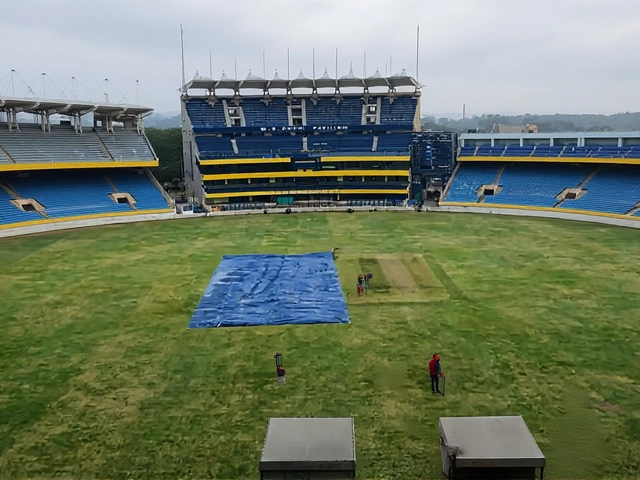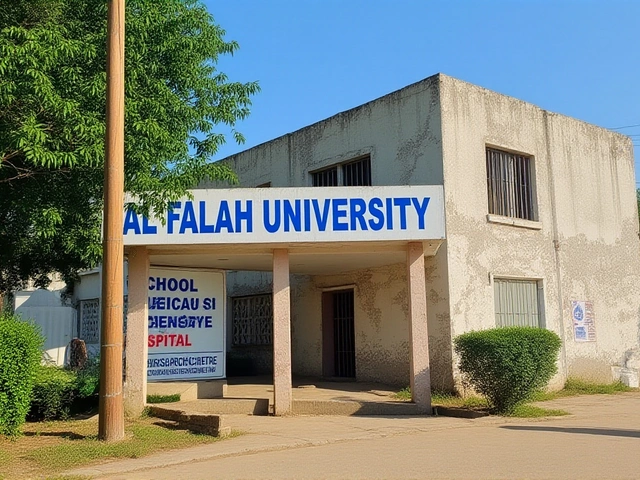On November 10, 2025, a car bomb ripped through the crowded approach to Delhi’s Red Fort, killing at least 12 people and injuring 30 more — a horror that didn’t end with the explosion. The bomber? Dr. Umar Un Nabi, a former faculty member at Al Falah University in Faridabad. What followed wasn’t just a manhunt. It was the unraveling of a chillingly systematic infiltration: doctors, staff, and administrators quietly embedded in a medical college that had become a front for terror. More than 200 people connected to the university are now under investigation, and the institution’s very legitimacy is collapsing under the weight of fraud, negligence, and alleged terror financing.
A Medical College as a Terror Incubator
The suicide bomber, Dr. Umar Un Nabi, drove his Hyundai i20 into a security checkpoint near the historic monument. But his path to that moment began in Faridabad. Investigators from the National Investigation Agency (NIA) and Delhi Police Special Cell uncovered that four doctors — including Dr. Muzammil, Dr. Shaheen, and Dr. Adil — had joined Al Falah University’s medical college without the legally required No Objection Certificates (NOCs). These weren’t random hires. They were operatives of Jaish-e-Mohammed, working under a "white collar terror module" that had been quietly building for two years. The scale of the operation stunned investigators. In a rented house in Dauj village, Faridabad, authorities recovered 2,900 kilograms of IED-making materials — enough to level entire city blocks. Dr. Shaheen, arrested after a rifle and cartridges were found in her car, was allegedly tasked with establishing a women’s wing for Jaish in India. Meanwhile, Dr. Muzammil’s home became a bomb factory. And the university? It was the perfect cover.Institutional Failure: No Background Checks, No Oversight
How did these individuals slip through? The answer is simple: no one was looking. Al Falah University, run by Jawad Ahmed Siddiqui, allegedly hired faculty based on connections, not credentials. The university claimed NAAC accreditation and UGC recognition — both false. In reality, it was operating as a diploma mill, charging students upwards of ₹4 lakh per year for degrees that meant nothing. Parents paid premiums for a "prestigious" medical college that didn’t even exist on paper. The Association of Indian Universities (AIU) revoked its membership on November 15. The National Assessment and Accreditation Council (NAAC) issued a formal notice on November 12, demanding an explanation for the false claims. And then came the money trail. On November 18, the Enforcement Directorate (ED) arrested Siddiqui in a ₹415 crore money laundering case. Investigators believe tuition fees, fake donations, and forged government grants were funneled into terror financing. Some of the cash, they suspect, paid for explosives, safe houses, and even the suicide bomber’s final journey to Delhi.Historical Ties, Hidden Past
This wasn’t the first time Al Falah University had been linked to extremism. Mirza Shadab Baig, a fugitive from the 2008 Indian Mujahideen bombings in Delhi and Pune, graduated from the university in 2007 with a B.Tech in electronics and instrumentation. He remains wanted with a ₹1 lakh bounty. His presence on campus wasn’t an anomaly — it was a pattern. Even more disturbing: the university’s minority status — the legal shield that allowed it to operate with minimal government oversight — is now under review. The National Commission for Minority Educational Institutions has issued a show-cause notice, demanding an explanation by December 4, 2025. The university’s Registrar and the Haryana Education Department’s Principal Secretary must appear. If the commission finds the institution no longer qualifies as a minority entity, its entire legal foundation could collapse.The Human Trail: Landlords, Phones, and Fleeing Staff
The investigation didn’t stop at the campus gates. A 35-year-old Anganwadi worker from Hidayat Colony, Nuh, was detained after fleeing for 13 days. She had rented a room to Dr. Umar Un Nabi. Investigators found he used seven different mobile phones during his stay — each one wiped clean before he left. Seven others in Nuh are now under questioning. Over 1,000 people connected to the university — students, staff, drivers, cleaners — have been interviewed. Dozens of student hostels and off-campus rentals have been raided. And then there’s the data: security agencies say hundreds of digital devices have been wiped clean. Investigators are now trying to recover deleted messages, WhatsApp backups, and cloud logs from phones that vanished with people who left campus immediately after the blast.Political Fallout and Public Trust
The case has ignited a political firestorm. On November 23, The New Indian Express reported that the Jamiat-e-Ulama-i-Hind chief publicly defended Al Falah University, calling the probe "targeted." The statement drew immediate backlash from families of victims and opposition leaders. Meanwhile, two FIRs have been filed by Delhi Police — one for cheating, another for forgery — against the university’s administration. The public is asking: how many more institutions are operating like this? How many terror operatives are hiding in plain sight, wearing white coats instead of masks? Al Falah University was supposed to heal. Instead, it may have helped kill.What’s Next?
The NIA is expected to file its first chargesheet by mid-December. The ED’s probe into ₹415 crore is still in its early stages. A forensic audit of the university’s financial records is underway. And the government is reportedly preparing a new policy requiring mandatory background checks for all faculty hires in private medical colleges — a reform that should have come years ago. For now, the campus remains sealed. The buildings stand empty. The medical degrees? Worthless. The trust? Shattered.Frequently Asked Questions
How did terror operatives get hired at Al Falah University without background checks?
Al Falah University bypassed mandatory No Objection Certificates (NOCs) required for all faculty hires in India, especially in medical institutions. Investigators found that hiring was based on personal referrals and cash payments, not formal vetting. The university’s leadership, including founder Jawad Ahmed Siddiqui, allegedly ignored documentation to fill positions quickly — creating a loophole exploited by Jaish-e-Mohammed operatives.
What role did the Enforcement Directorate play in this case?
The Enforcement Directorate (ED) arrested university founder Jawad Ahmed Siddiqui on November 18, 2025, in connection with a ₹415 crore money laundering scheme. Investigators believe tuition fees, fake grants, and forged UGC documents were laundered through shell companies to fund terror activities. The ED is now tracing transactions linked to the purchase of explosives and safe house rentals in Faridabad and Nuh.
Why is the university’s minority status under threat?
Al Falah University claimed minority status under India’s educational laws to operate with minimal government oversight. But the National Commission for Minority Educational Institutions now questions whether it truly serves a minority community, especially after two suspects in the Red Fort blast were linked to it. A hearing on December 4, 2025, will determine if the university loses its legal protections — potentially triggering its closure.
Are other medical colleges at risk of similar infiltration?
Yes. At least 12 private medical colleges in Haryana and Uttar Pradesh operate without transparent faculty verification systems. The Al Falah case exposed systemic gaps in the UGC’s monitoring framework. The Ministry of Education is now drafting emergency guidelines requiring biometric verification and police clearance for all new hires — a reform that should have been implemented after the 2008 Mumbai attacks.
What happened to the students of Al Falah University?
Over 3,200 students — many from low-income families — paid up to ₹4 lakh per year for degrees that are now invalid. The University Grants Commission has advised all students to seek transfers to accredited institutions. The Haryana government is considering a compensation scheme, but no formal policy has been announced. Many students have lost years of education and face uncertain futures.
Is there evidence the university was deliberately used as a terror cover?
Investigators believe the university was intentionally exploited. The timing of faculty hires — all occurring between 2022 and 2024 — coincides with Jaish-e-Mohammed’s reorganization phase. The same people who falsified NAAC documents also arranged false addresses for operatives. The presence of Mirza Shadab Baig, a 2007 graduate wanted for terrorism, suggests a long-standing pattern, not a single lapse.







